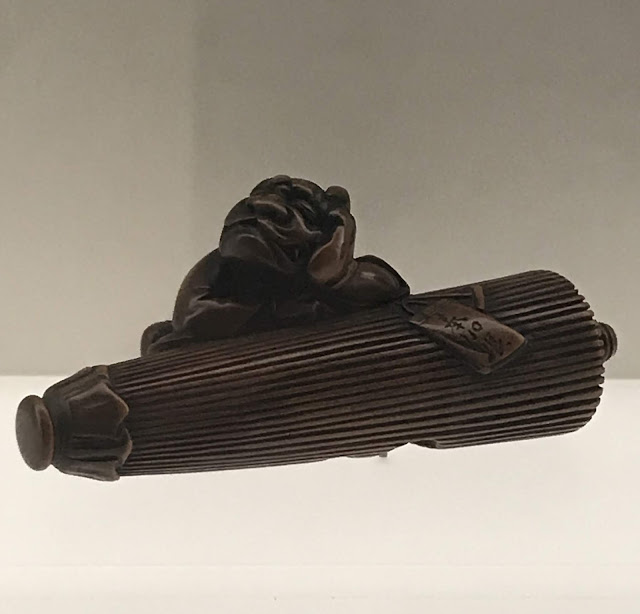 |
| Odysseus navigates through the Strait of Messina Solomon Islands commemorative coin, 2018 |
Sometimes, Dear Reader, I feel as though an unseen hand gets in the way of any original thoughts that might otherwise circulate around our civilisation. I don't mean this in the dystopian 1984 sense, where the Thought Police are enforcing Newspeak; rather in the feeling sometimes that a Memo has been sent round that I only intuit by chance. Take the expression, "Between Scylla and Charybdis" - I think a Memo has gone round that it's the now the preferred idiom as the metaphor for a Dilemma.
 |
| Five men down but Odysseus soldiers on Allesandro Allori, 1575 |
For a goodly while now, our as-yet unread copy of Homer's Odyssey has been sitting in one of the book piles about the place, so my rather unlettered self had not yet met within the sea monsters Scylla (the many-headed terror on one side of the narrow Strait of Messina) and Charybdis (the whirlpool-creating malevolence on the other) who gave Odysseus so much grief, nor had I chanced upon them as a variant on the expression "between a rock and a hard place" in my day-to-day life.
I know ... Where have I been?
 |
| Odysseus has a close shave with Charybdis' whirlpool William Bromley print in Pope's translation, 1806 |
However, would three recent encounters in disparate references make you sit up and take notice? It did me, and although I've no idea who sends out these memos and how you receive them, I am tipping my hat in acknowledgement and dutifully entitling this post Scylla & Charybdis, even though I'm not caught between the devil & the deep blue sea about anything, really. So, job done.
Encounter 1:
 |
| Barbara got the memo in 2018 |
The best thing I can say about the much-anticipated Barbara Kingsolver book Unsheltered is that it features the hounds named Scylla & Charybdis that sent me on a quest to brush up on the literary reference. And to double check the pronunciation while I was at it. (Silla and Ka-ribdis, which of course you already knew). The glory that is The Poisonwood Bible is one of the absolute favourite modern books of both Mum and I, so she thought she'd made an excellent choice in Unsheltered as a birthday present this year, and I put it aside for the Winter reading with much anticipation. But, sadly, it was hard going. While the parallel world of the 19th Century residents of the house the story is set in was the better half for me, the contemporary issues many modern-day Americans are enduring are slathered on too thickly in the balancing and interwoven side and just makes for dismal reading.
I'm all for realism in literature but I like it dished up with sepia tones. Anthony Trollope is a fine Victorian example for me, writing mostly on the issues of the day in minute detail, but read through the lens of time his books are both an accurate window onto the past and still cracking good reads. Would Unsheltered stand up to the same sort of treatment? I can't imagine it, except as some grim litany of the ills of the 21st Century. Sorry, Barbara, but I'll have to reread The Poisonwood Bible in order to put you back on your pedestal and let's just forget your latest one all together.
Encounter 2:
 |
| So did Sebastian |
Now that I can recognise Scylla & Charybdis from one hundred yards as being the mythic monsters who so terrified the Grecian sandals off Odysseus and his sailors, I understand immediately that Bertie Wooster would have been alarmed when he encounters two varieties of Aunt flanking a doorway and has described them thus. But I was not reading this in a book penned by one Pelham Grenville Wodehouse's fair hand, for whom a solid grounding in Classics was a given, but Sebastian Faulks in his 2018 authorised homage to P.G.W., Jeeves and the Wedding Bells.
While I did indeed read a "Blandings" as the fast-acting antidote to the heavy wallowing in the slough of despond that B.K. dragged me through, as a fan of the Wodehouse œuvre I was a little sceptical when I saw this book innocently sitting in the informal book exchange of our condominio. But being curious, I looked left and then right and saw no-one lurking nearby and so spirited it away to have a read. And I can say that I thought it not half bad! There are a couple of mostly plot quibbles, including the spoiler that Bertie and Jeeves both Pop the Question (not to each other!), when one of the most amusing aspects to Bertie is his close shaves with losing his perpetual bachelorhood. But in terms of catching the tone, S.F. made a good fist of it and while I didn't laugh out loud, I was amused.
Encounter 3:
 |
| Scylla, 1938 Ithell Colquhoun |
Lo! Look what dropped into my email inbox last month and caught my eye. A short essay on the Surrealist artist Ithell Colquoun was adorned with her painting Scylla, 1938 which now lives in the Tate in London. I.C. seems unlikely to be the type to have taken direction from anyone, so her Classical reference is a mere coincidence to the topic at hand, in my opinion, and anyways predates my other random encounters by eighty years. But that I should read about it now surely suggests that she's become rather more fashionable, now that she's posthumously adhering to the Memo.
Image credits: Google - 1; Wikimedia Commons - 2, 3; Flying With Hands - 4, 5; Tate - 6

_(14585145288).jpg)



















